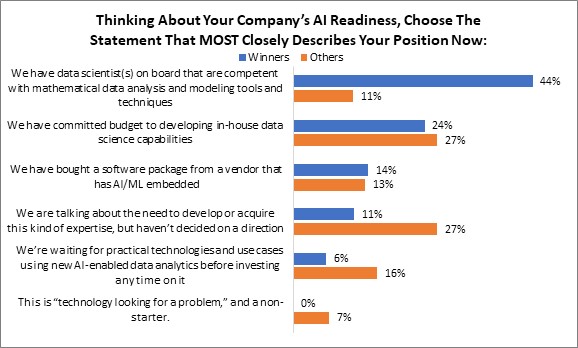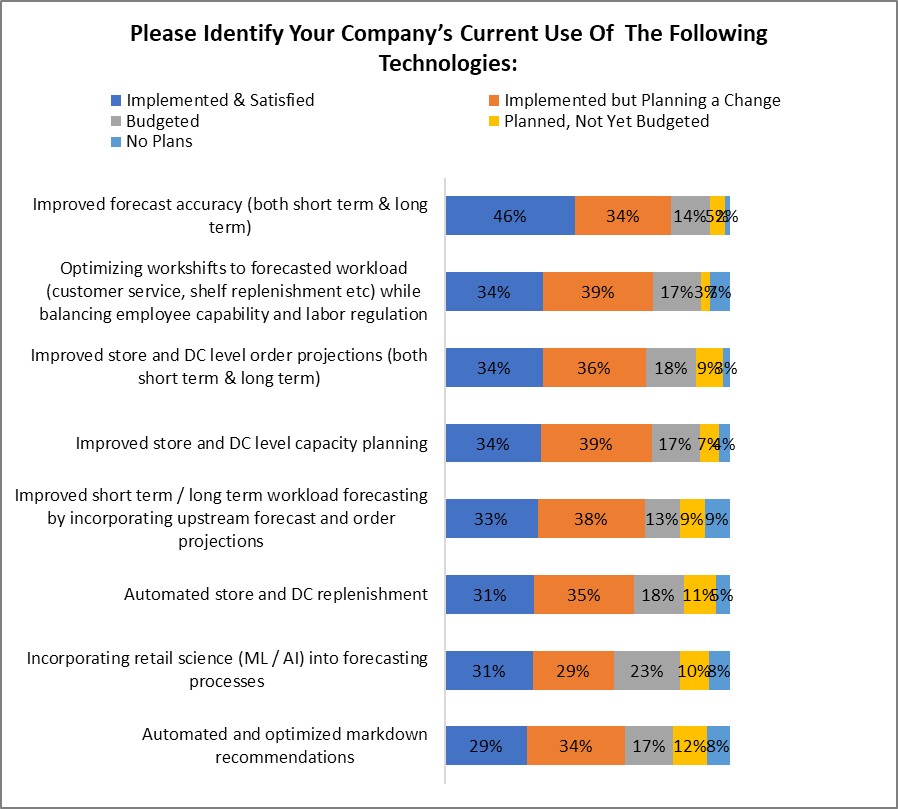What’s The Key To Getting The Most From AI? The Right People – And The Right Forecast
In our most recent benchmark report, the insights that AI technologies promise are viewed as a key enabler to address a compelling business opportunity, delivering on the brand promise in a focused and locally relevant way. But as we know from other recent RSR benchmarks, the shortage of affordable data scientists who can help retailers develop the models is a serious stumbling block.
In this study, we asked retailers if they have addressed the human resource issue (Figure 1):
Figure 1: It Takes The Right Talent

Source: RSR Research, February 2021
Retailer responses underline how Retail Winners are going after the advantages that AI-enabled solutions promise. This reflects a data point we uncovered in RSR’s September 2020 study on the state of AI adoption in retail[1]:
“...for Winners, it’s not a question of if, but how… Winning retailers are already using non-transactional data generated both from inside their enterprises and from the markets they operate in to respond very quickly to changing conditions … Retail Winners understand that AI’s ability to identify patterns in data and to establish correlations between patterns are key value-adds.”
This study shows that one difference between Winners and others’ thought processes is revealed by observing their financial commitment to acquire the talent needed to build internal expertise. Many Winners have committed, while others are thinking about it. RSR’s sense is that this early push goes right back to the top opportunity that Winners identified earlier in this report, to achieve “strategic placement of inventory throughout the supply chain to better fulfill customer needs” by “being able to produce highly accurate and granular forecasts”. The ability to analyze external and often non-transactional data to learn potentially important correlations between those data and sales is a top reason for Winners’ interest in AI technologies.
The Forecast First
The notion of supporting a hyper-localized brand offering is really an extension of something retailers have been doing for a long time: store clustering. True one-to-one retailing is unrealistic – and probably undesirable – for most retailers. Limiting assortment variability to a few “model” stores is too broad a stroke for today’s demanding consumers. So far, this study has shown that a high percentage of retailers seek to focus localization to those items that are most likely to sell according to local consumer shopping patterns, while still achieving hard won economies of scale.
As RSR has seen in other recent studies, that is why retailers are so focused on their ability to forecast better. Whereas in the past planning was largely a function of using last year’s sales as a baseline and then adding/subtracting based on the expertise of the merchants doing the planning and corporate promises to “the Street”, now retailers want to have a more systematic approach, and consider other data such as[2]:
- Competitor information
- Sudden and significant changes in customer behavior
- Market metrics
- Location demographics and psychographics
- Real-time environmental and social incidents (disruptive events, sporting events, etc.)
- Community health (the progression of seasonal flu, etc.)
- Business schedules
- Commute patterns
- School schedules
- Weather
Retailers’ efforts to use this new data doesn’t only affect long-term planning, but short-term forecasting as well. Ultimately, retailers want to be able to respond very quickly to changes in the marketplace. These changes call out for an immediate response, not only to the flow of merchandise to selling and customer order fulfillment locations, but to employee work schedules as well (Figure 2).
Figure 2: Forecasting – Both A Capability And An Enabler

We invite all of our registered members to read the full report, Managing Through Disruptive Times, which is available by following this link.
